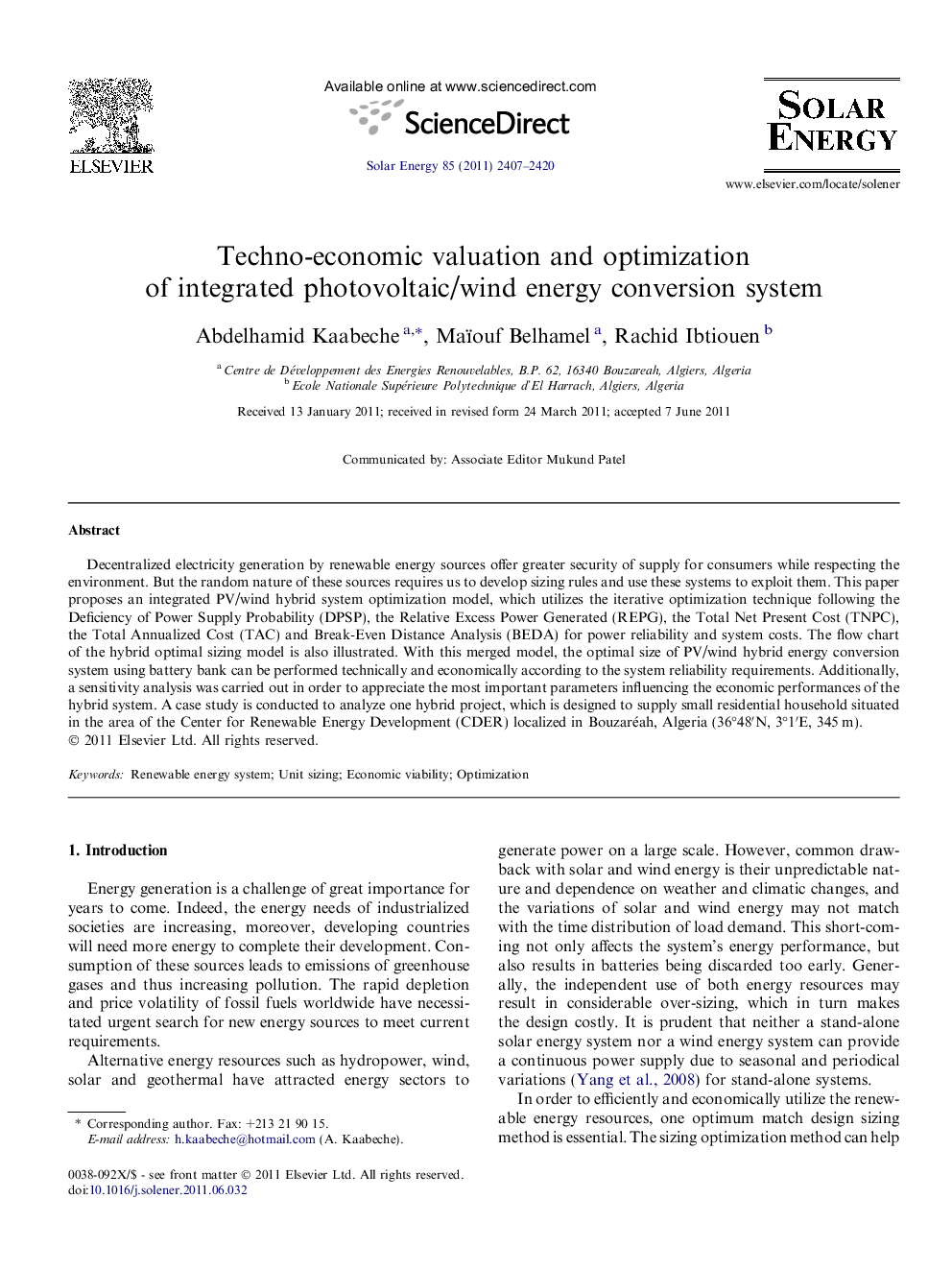| Article ID | Journal | Published Year | Pages | File Type |
|---|---|---|---|---|
| 1550861 | Solar Energy | 2011 | 14 Pages |
Abstract
Decentralized electricity generation by renewable energy sources offer greater security of supply for consumers while respecting the environment. But the random nature of these sources requires us to develop sizing rules and use these systems to exploit them. This paper proposes an integrated PV/wind hybrid system optimization model, which utilizes the iterative optimization technique following the Deficiency of Power Supply Probability (DPSP), the Relative Excess Power Generated (REPG), the Total Net Present Cost (TNPC), the Total Annualized Cost (TAC) and Break-Even Distance Analysis (BEDA) for power reliability and system costs. The flow chart of the hybrid optimal sizing model is also illustrated. With this merged model, the optimal size of PV/wind hybrid energy conversion system using battery bank can be performed technically and economically according to the system reliability requirements. Additionally, a sensitivity analysis was carried out in order to appreciate the most important parameters influencing the economic performances of the hybrid system. A case study is conducted to analyze one hybrid project, which is designed to supply small residential household situated in the area of the Center for Renewable Energy Development (CDER) localized in Bouzaréah, Algeria (36°48′N, 3°1′E, 345 m).
Related Topics
Physical Sciences and Engineering
Energy
Renewable Energy, Sustainability and the Environment
Authors
Abdelhamid Kaabeche, Maïouf Belhamel, Rachid Ibtiouen,
